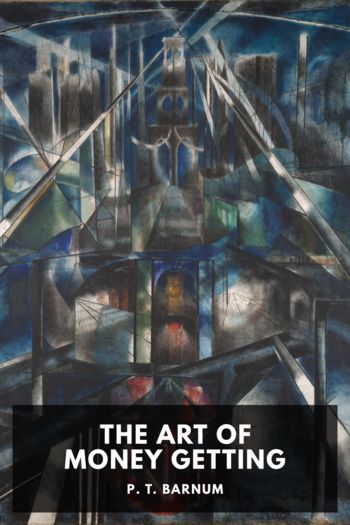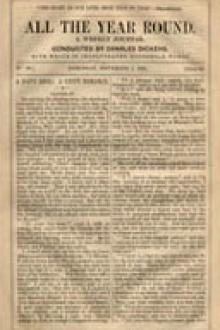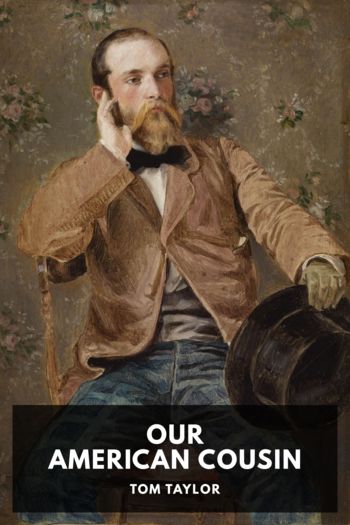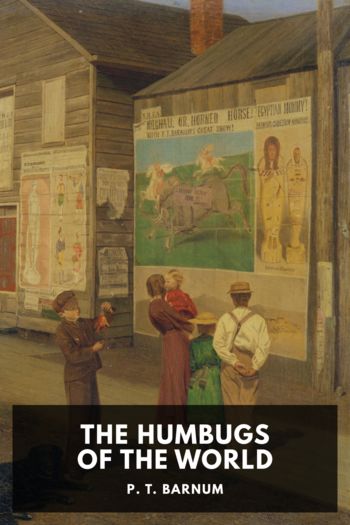Struggles and Triumphs by P. T. Barnum (love novels in english TXT) 📕

- Author: P. T. Barnum
Book online «Struggles and Triumphs by P. T. Barnum (love novels in english TXT) 📕». Author P. T. Barnum
In October I visited Colorado accompanied by my English friend John Fish, and a Bridgeport gentleman who has an interest with me in a stock-raising ranch in the southern part of that Territory. We took the Kansas Pacific Railroad to Denver, seeing many thousands of wild buffalo—our train sometimes being stopped to let them pass. The weather was delightful. We spent several days in the new and flourishing town of Greeley. I gave a temperance lecture there; also at Denver. At the latter city, in the course of my remarks, I told them I never saw so many disappointed people as at Denver. The large audience looked surprised, but were relieved when I added, “half the inhabitants came invalids from the East, expecting to die, and they find they cannot do it. Your charming climate will not permit it!” And it is a fact. I am charmed with Colorado, the scenery and delightful air, and particularly would I recommend as a place of residence to those who can afford it, the lively, thriving city of Denver. To those who have their fortunes yet to make, I say “go to Greeley.”
We took the narrow gauge road from Denver to Pueblo, stopping at Colorado Springs and the “Garden of the gods.” The novel scenery here amply paid us for our visit. From Pueblo I proceeded forty miles by carriage to our cattle ranch, and spent a couple of days there very pleasantly. We have several thousand head of cattle there, which thrive through the winter without hay or fodder of any kind.
At the close in Detroit of the great Western railroad tour, I equipped and started South a Museum, Menagerie and Circus, which, while it made no perceptible diminution in the main body, was still the largest and most complete travelling expedition ever seen in the Southern States. Louisville was designated as the rendezvous and point of consolidation of the various departments, and the new expedition gave its initial exhibition in the Falls City, November 4th. Much of the menagerie consisted of animals of which I owned the duplicate, and hence could easily spare them without injuring the variety in my zoological collection. I was aware also that many of the rare specimens would thrive better in a warmer climate, and as the expense of procuring them had been enormous, I coupled my humanitarian feelings with my pecuniary interests and sent them South.
And now in this routine of events for 1872, I record one important project with mingled feelings of pleasure and pain. In August I purchased of Mr. L. B. Lent the building and lease in Fourteenth street, New York, known as the Hippotheatron. One purpose was to open a Museum, Menagerie and Hippodrome that would give employment to two hundred of my people who otherwise would be idle during the winter. Another and main object was to take the inaugural steps toward the foundation of a permanent establishment, where the higher order of arenic entertainments could be witnessed under all the advantages of a thoroughly equipped, refined and moral dramatic entertainment. My project combined not only a circus, but a museum of the world’s wonders and a menagerie that should equal in extent and variety the great zoological collection of London. I realized the importance of an establishment in New York where old and young could seek innocent amusement, and where Christian parents could take their children and feel that the exhibition contributed not only to their enjoyment but to their instruction. The press generally had kindly acknowledged the success of my efforts in bringing the modern arena up to its proper standard among the fashionable amusements of the day. By divesting the ring of all objectionable features, and securing the highest talent of both hemispheres, my circus had become popularized among the better classes, for whose good opinion it has ever been my fortune to cater. At an expense of $60,000 I enlarged and remodeled the building, so as to admit my valuable collection of animals, museum of life-size automatons, and living curiosities. The entire edifice was so thoroughly built over as to leave but little to remind the visitor of the original structure. The amphitheater had a seating capacity of 2,800. It consisted of parquette and balcony, each completely encircling the ring, and the former luxuriously fitted up with cushioned armchairs and sofa seats. The grand opening took place Monday evening, November 18th. In theatrical parlance, the house was crowded from “pit to dome.” The leading citizens of the metropolis were present, many of whom on that occasion patronized an equestrian entertainment for the first time. Viewed from the center of the ring, the vast amphitheater presented a scene of bewildering beauty. The dazzling lights, the delightful music of the orchestra, the gorgeous surroundings, and the brilliant audience—filling the numerous circles of seats which rose one above another to the most remote outskirts of the building—all formed a picture so unlike anything ever before seen in New York, as to bring out detailed and eulogistic editorials from the press of the following morning. Being recognized among the audience, I was called into the ring, when I briefly thanked my friends for their generous appreciation. From this date the establishment was open daily from 11 a.m. to 10 p.m., with hippodrome performances afternoon and evening.
On December 16th, four weeks after the inauguration of the new Fourteenth street building, I started for New Orleans, to visit my southern show. I found the Crescent City





Comments (0)